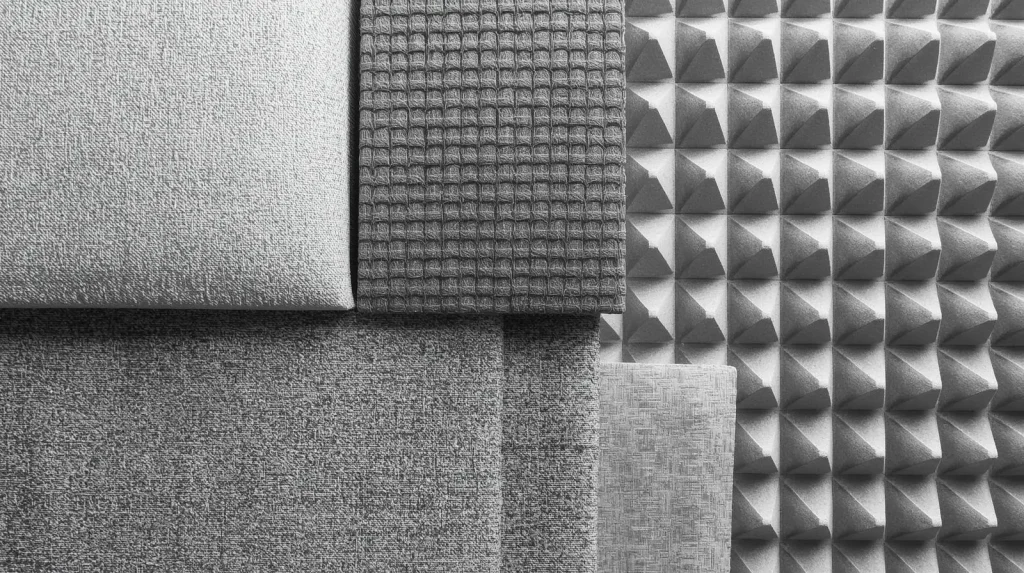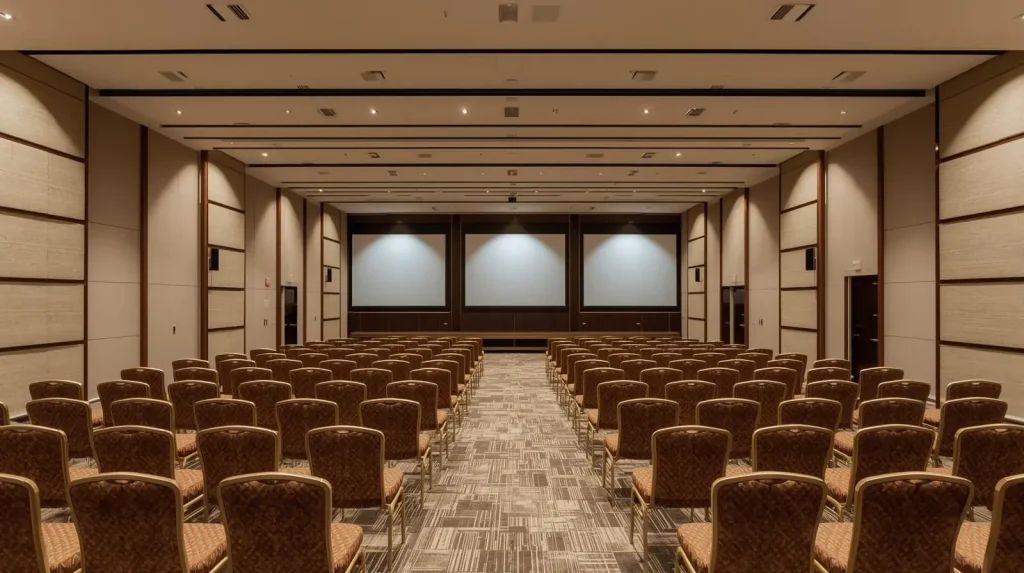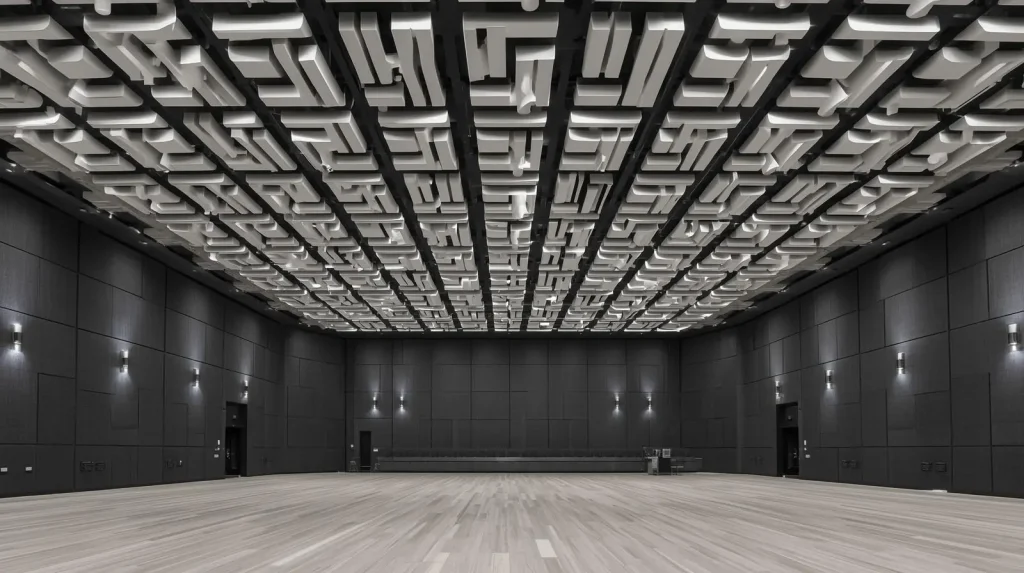Creating a comfortable acoustic environment is one of the most underestimated challenges in the events industry. Many venues look visually impressive yet fail to deliver a pleasant listening experience. Echo, reverberation, and external noise can quickly disrupt weddings, conferences, concerts, and corporate gatherings.
This case study explores how a busy, echo-prone event hall was transformed into a fully soundproof venue with excellent speech clarity and controlled acoustics. The project highlights real strategies, professional insights, and detailed steps taken to turn a noisy hall into a high-quality, profitable event destination.
Understanding the Client’s Challenges
Before renovation, the hall dealt with multiple noise and reverberation issues that directly impacted guest satisfaction and limited event possibilities.

High reverberation times
The hall featured concrete walls, tile floors, and a tall metal ceiling. These hard materials caused excessive sound reflection that led to:
- Strong echo
- Poor speech clarity
- Harsh reverb across the room
Reverberation averaged more than 2.5 seconds, far above the ideal range for speech-focused events.
Noise bleed from adjacent spaces
The venue shared walls with a parking area and a busy commercial strip. Sounds from cars, foot traffic, and loading activities easily seeped into the hall. This intrusion was especially disruptive during ceremonies and presentations.
Event limitations
The acoustic issues made it difficult to host:
- Corporate meetings
- Hybrid video events
- Live music
- Private ceremonies
- Educational workshops
These restrictions affected revenue and reduced the venue’s competitiveness.
Initial Acoustic Assessment
A full acoustic assessment was conducted to identify problems and create a targeted improvement plan.

Acoustic measurements and analysis
Consultants used specialized tools to measure:
- Reverberation time
- Frequency response
- STC values of existing walls
- Background noise during peak hours
Data confirmed that the space needed both acoustic treatment and structural soundproofing.
Identifying problem surfaces
The biggest contributors to poor acoustics included:
- Bare concrete walls
- A reflective metal ceiling
- Large glass sections
- A hollow, resonant stage
- Air leakage around doors and wall joints
Mapping these surfaces allowed the team to create a focused treatment strategy.
Developing the Soundproofing Strategy
The goal was to balance sound absorption, sound isolation, and improved internal sound distribution.

Designing a balanced acoustic plan
The acoustic strategy targeted three core improvements:
- Reduce echo and reverberation.
- Block outside noise from entering.
- Improve clarity for spoken and amplified sound.
Acoustic absorption solutions
To soften reflections and control echo, the team installed:
- High NRC acoustic wall panels
- Fabric-wrapped decorative panels
- Suspended ceiling baffles
These materials absorbed mid and high frequencies, smoothing out harsh reflections that previously filled the hall.
Sound isolation upgrades
To block intrusive noise, several isolation products were added:
- Mass loaded vinyl in wall cavities
- Double layered drywall with acoustic adhesive
- Weather sealed door frames
- Thick sound-dampening curtains for glass walls
These improvements increased the hall’s STC rating and reduced outside noise significantly.
Flooring modifications
The reflective tile floor was partially replaced with a layered acoustic underlayment topped with commercial carpeting. Benefits included:
- Reduced footfall noise
- Lower vibration transfer
- More controlled low frequency acoustics
Implementation and Installation Process
The renovation required careful timing so the venue could continue hosting events.

Coordinating work around event schedules
The installation was divided into four phases:
- Wall soundproofing
- Ceiling treatment
- Door and window isolation
- Flooring upgrades
Noisy work was scheduled early in the morning or on low booking days.
Custom acoustic panels
The venue wanted aesthetics to match its upscale brand. Custom fabricated panels included:
- Elegant neutral fabrics
- Geometric patterns
- Fire rated materials
- Seamless edges
These added style as well as acoustic efficiency.
Ceiling baffle engineering
Using acoustic modeling, consultants positioned ceiling baffles in reflection hotspots. Staggered mounting heights created a natural sound diffusion effect without cluttering the ceiling visually.
Results After Soundproofing the Hall
The transformation dramatically improved the hall’s performance and usability.

Acoustic performance improvements
After installation, testing showed significant improvements:
- RT60 reduced from 2.5 seconds to 1.1 seconds
- Clearer announcements and speeches
- Greatly improved audience comfort
- More balanced sound during live music
Enhanced venue versatility
The upgraded acoustics opened the door to many event types that were not previously possible, including:
- Corporate seminars
- Hybrid virtual events
- Live music shows
- Wedding ceremonies
- Fitness classes
- Training workshops
More versatility meant increased bookings.
Positive guest and client feedback
Guests reported:
- Clearer audio
- Less echo
- Better music quality
- Reduced listening fatigue
Event organizers enjoyed easier sound system setups and fewer technical complications.
Business Impact of the Soundproofing Project
The renovation delivered measurable business value.
Higher booking rates and increased revenue
Once the acoustics improved, the hall saw:
- Higher demand from corporate planners
- More premium event bookings
- Better online reviews
- Increased year round reservations
Good acoustics became a unique selling point.
Reduced operational challenges
The staff experienced fewer issues such as:
- Microphone feedback
- Hard to manage sound levels
- Complaints from guests
- Need for extra AV technicians
Events became smoother and easier to manage.
Competitive advantage
In a crowded market, great sound helped the venue stand out. Word of mouth increased and repeat bookings became more common.
Key Takeaways From This Case Study
Key lessons from this renovation include:
- Successful soundproofing requires both absorption and isolation.
- Placement matters as much as material choice.
- Acoustics and interior design can complement each other.
- Better sound quality directly improves business outcomes.
Conclusion and Call to Action
Transforming a noisy event hall into a soundproof venue creates a more enjoyable experience for attendees and organizers while boosting the venue’s long term profitability. By addressing echo, reducing outside noise intrusion, and enhancing speech clarity, the hall became more versatile and more valuable.
If you want to upgrade your venue’s acoustics or need a custom soundproofing strategy, I can help you develop a plan that fits your space and goals.

